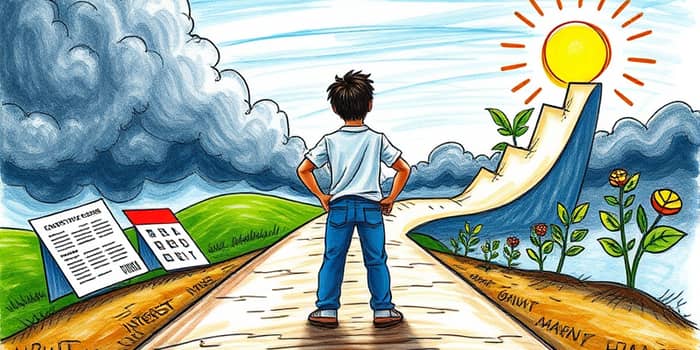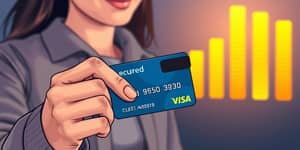For many, making the minimum payment on a credit card feels like a quick fix—an easy way to stay current without pinching the monthly budget. Yet beneath that surface convenience lies a complex reality that can trap millions in a cycle of mounting debt and mounting anxiety.
In this article, we unravel the hidden costs, behavioral triggers, and practical steps to shift from surviving on minimums to thriving with full control of your finances.
Understanding the Mechanics of Minimum Payments
The minimum payment is the lowest amount required to keep a credit account in good standing. Typically set at 1%–3% of the outstanding balance plus fees and accrued interest, it gives consumers the illusion of affordability while extending their debt horizon.
Credit issuers promote this structure for exclusive interest income streams, a model where the majority of each payment covers high APR charges instead of reducing principal balances.
The Growing Trend and Its Implications
Recent data shows a worrying surge in minimum-only payments. As of Q3 2024, over 10.75% of consumers made only the minimum due, and 22% of all card users fall into this category.
At the same time, 30-day delinquency rates peaked at 3.52%—the highest level in more than a decade. With Americans holding over 500 million cards and total revolving debt surpassing $1 trillion, the ripple effects are profound for both individuals and the wider economy.
The True Cost: Interest, Time, and Stress
Making only minimum payments can dramatically extend debt duration. A typical $5,000 balance at 18% APR may linger for more than 20 years when paid down slowly, during which interest often absorbs over 90% of every payment.
The mental toll is equally severe. Carrying prolonged balances undermines savings goals, raises ongoing stress levels, and limits capacity to invest or handle emergencies.
Behavioral Traps and Psychological Effects
Why do so many stick to the minimum? Behavioral research highlights the “minimum-payment effect,” where the highlighted due amount becomes an anchor, guiding decision-making regardless of actual ability to pay more.
- Transactors: pay balances in full, avoiding interest.
- Revolvers: carry balances month to month.
- Minimum-Payers: cover only the stated due amount.
Understanding where you fit in this spectrum is the first step to breaking free from the inertia that keeps high-interest balances alive.
Who Bears the Brunt of This Strategy?
Not all consumers share the same risk. Households earning under $50,000 annually face steeper challenges, with soaring living costs forcing many into a cycle of minimum payments. Non-homeowners and those granted cards during pandemic-era credit relaxations are also disproportionately affected.
High utilization rates, a consequence of lingering card balances, can further damage credit scores, creating a vicious feedback loop that leads to higher interest rates and mounting fees.
Transforming Your Approach: Practical Steps Forward
Escaping the minimum-payment trap requires deliberate action and informed planning. Here are proven strategies to accelerate debt reduction and reclaim financial freedom:
- Review Your Budget: Identify nonessential expenses to reallocate more funds toward your balance.
- Negotiate Lower Rates: Contact issuers to request hardship programs or reduced APR offers.
- Consider Consolidation: Transfer balances to a 0% offer or secure a debt consolidation loan.
- Build an Emergency Fund: Even a small cushion can prevent reliance on credit cards during crises.
- Seek Professional Guidance: Financial advisors or certified credit counselors can tailor strategies to your situation.
Breaking Free and Building Confidence
Shifting from minimum payments to full control is more than a financial maneuver—it is an empowering act that restores choice, reduces stress, and opens pathways to long-term stability. Every extra dollar applied to your principal balance chips away at the interest mountain and shortens your debt timeline.
By cultivating greater financial awareness and proactive habits, you transform credit cards from a source of anxiety into tools for responsible flexibility. The journey demands discipline, but every milestone reflects growing strength and resilience.
Your next step begins now: review your statements, set a bold repayment target, and commit to progress beyond the bare minimum. With each payment above the floor, you reclaim ownership of your future and chart a course toward lasting financial empowerment.
References
- https://www.paymentsjournal.com/a-record-number-of-consumers-are-making-minimum-credit-card-payments/
- https://www.lendingtree.com/credit-cards/study/credit-card-debt-statistics/
- https://www.bondnbotes.com/blog/hidden-danger-making-only-minimum-payments-credit-cards
- https://www.pymnts.com/consumer-finance/2025/minimum-payment-effect-covers-growing-number-of-credit-card-users/
- https://www.debt.org/credit/cards/hazards-of-paying-the-minimum-payment-on-your-credit-card/
- https://use.expensify.com/blog/credit-card-statistics
- https://www.sunflowerbank.com/about-us/resource-articles/why-making-minimum-credit-card-payments-is-financially-disastrous/
- https://fred.stlouisfed.org/series/RCCCBSHRMIN










